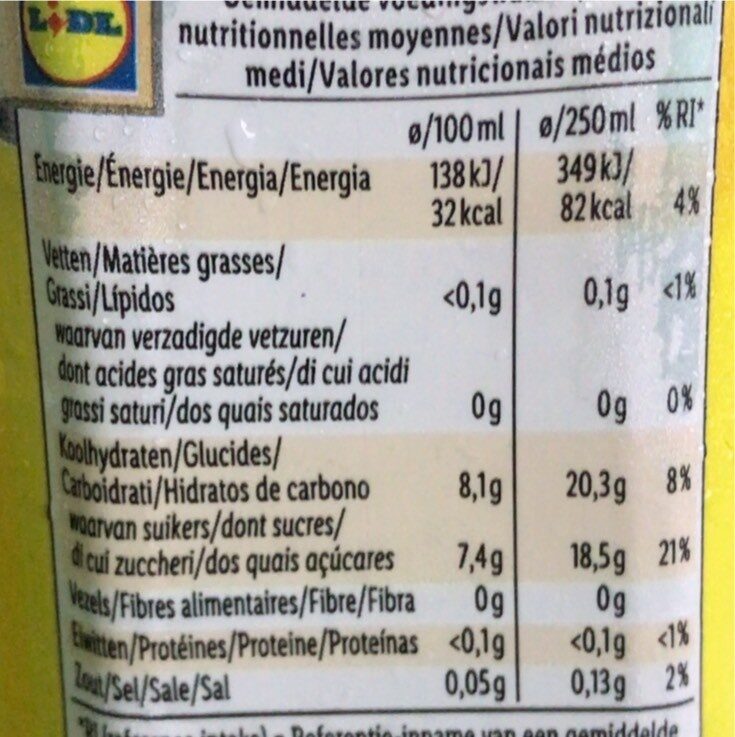Aloe Vera drink - Vitasia - 500 ml
Ambiguous barcode: This product has a Restricted Circulation Number barcode for products within a company. This means that different producers and stores can use the same barcode for different products.
×
This product page is not complete. You can help to complete it by editing it and adding more data from the photos we have, or by taking more photos using the app for Android or iPhone/iPad. Thank you!
×
Barcode: 20942762
Common name: Boisson rafraichissante aromatisée à l'aloe vera
Quantity: 500 ml
Brands: Vitasia
Categories: Plant-based foods and beverages, Beverages, Plant-based beverages, Sweetened beverages
Labels, certifications, awards: Vegetarian, Vegan
Stores: Lidl
Countries where sold: Belgium
Matching with your preferences
Environment
Packaging
Transportation
Report a problem
Data sources
Product added on by kiliweb
Last edit of product page on by kiliweb.
Product page also edited by herrvirgilius, openfoodfacts-contributors, packbot, thaialagata, yuka.AI9cDeGiA8F-G_XKwL0ewB2cPtrQE_QII3EXoQ, yuka.DOtuJoOrMMsgTdzi4YQY9yG4LurdLsZESC9Vow, yuka.EuxcOMzbTv4PDPfAz64L-D6yCMiwCe9AIEQEog, yuka.HItlMIDaTuEtAtzN9asy4z2bFe7HEfhZIW9Sog, yuka.JKtrZ8KvFcAIHMTggNk5-jKLNOX4GdRWCn8mog, yuka.Jp9aB9KtFcIbBcPUyKFu3j6FFNrpU-VLOE4foQ, yuka.R1laWUNJQUZtYUVQdWRnMTVBL08rOVo2NEx5UFJGdTBKc29QSVE9PQ, yuka.ZEtvd0tLQTdqOFlraGM4ZTh3ejcydTk0eGJ5SlFHVzFDTFljSVE9PQ, yuka.sY2b0xO6T85zoF3NwEKvlhFuf8b4vWn-CjjVmXK37--2cMfObdJX_rrqHqo, yuka.sY2b0xO6T85zoF3NwEKvlkxKf8D3iBn1NEXkolWAw9W_NcPQUIFC8I2jP6s, yuka.sY2b0xO6T85zoF3NwEKvlmtFdovxpRHtLSHQnlyWy_bSArfvSM9I3rfbIag.










